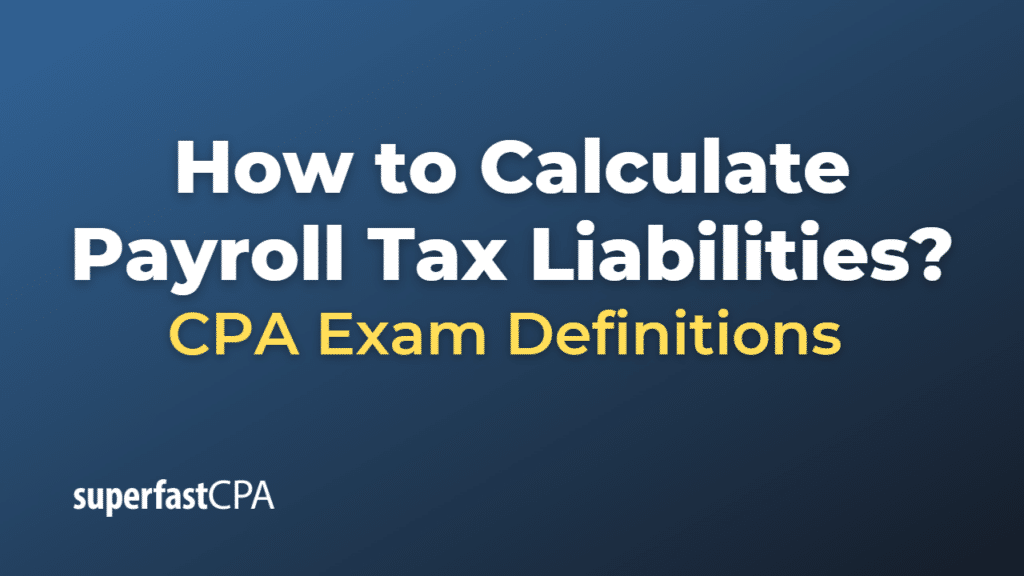How to Calculate Payroll Tax Liabilities
Calculating payroll tax liabilities involves determining the amount of money that a business needs to withhold from its employees’ paychecks to pay various government taxes. It also includes the employer’s portion of certain taxes. In the United States, payroll taxes typically include:
- Federal Income Tax: This is based on the employee’s income, filing status, and the number of allowances they claim on their Form W-4. The exact amount to withhold can be found in the IRS’s tax withholding tables, which are updated each year.
- Social Security Tax: As of my knowledge cutoff in September 2021, employers must withhold 6.2% of an employee’s gross income up to a certain limit (the Social Security wage base) for Social Security tax. The employer also pays a matching 6.2%.
- Medicare Tax: Employers must withhold 1.45% of all of an employee’s gross income for Medicare tax. The employer also pays a matching 1.45%. For employees who earn more than a certain threshold, an additional 0.9% in Medicare taxes must be withheld, but the employer does not match this additional amount.
- State and Local Taxes: These vary widely, so employers will need to refer to their state and local tax agencies for the proper rates.
To calculate payroll tax liabilities, add up all these amounts. The total payroll tax liability will be the sum of all the employee withholdings plus the employer’s portion of the Social Security and Medicare taxes.
For example, if an employee earns $1,000 in a pay period, and you’re withholding $150 for federal income tax, $62 for Social Security tax, $14.50 for Medicare tax, and $30 for state and local taxes, the employee’s withholdings total $256.50. The employer’s contributions to Social Security and Medicare would be $76.50 ($62 for Social Security and $14.50 for Medicare). Therefore, the total payroll tax liability would be $333 ($256.50 + $76.50).
Remember, always consult with a tax professional or a payroll service to ensure accuracy. Laws and rates can change, and there may be additional considerations depending on your specific situation.
Example of How to Calculate Payroll Tax Liabilities
Let’s say you have an employee, Lisa, who earns $2,000 per bi-weekly pay period. From her W-4 form and using the IRS’s tax withholding tables, you’ve determined you need to withhold $200 for federal income tax.
You’ll also need to calculate Social Security and Medicare taxes. The rates are 6.2% for Social Security and 1.45% for Medicare. Remember, these percentages are applied to the gross income, and both the employer and the employee pay these portions.
Social Security tax: $2,000 * 6.2% = $124
Medicare tax: $2,000 * 1.45% = $29
So, Lisa’s total employee tax withholdings would be: $200 (federal tax) + $124 (Social Security) + $29 (Medicare) = $353
As an employer, you’re also responsible for the same Social Security and Medicare amounts, which totals $124 (Social Security) + $29 (Medicare) = $153
So, your total payroll tax liability for this pay period for Lisa would be $353 (Lisa’s withholdings) + $153 (employer’s portion) = $506
In this example, we have not considered state and local taxes, nor have we considered the additional Medicare surtax that applies to high earners. Those would need to be added in to get the full picture of your payroll tax liabilities. Remember, tax rates and regulations can change, and there may be other considerations for your specific situation, so it’s always a good idea to consult with a tax professional or use a payroll service to help manage these calculations.













